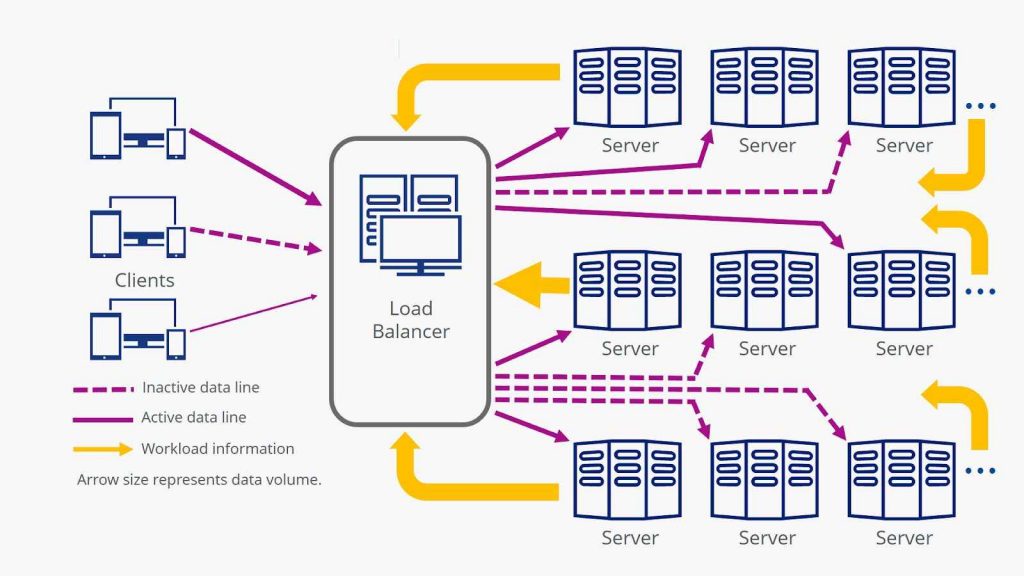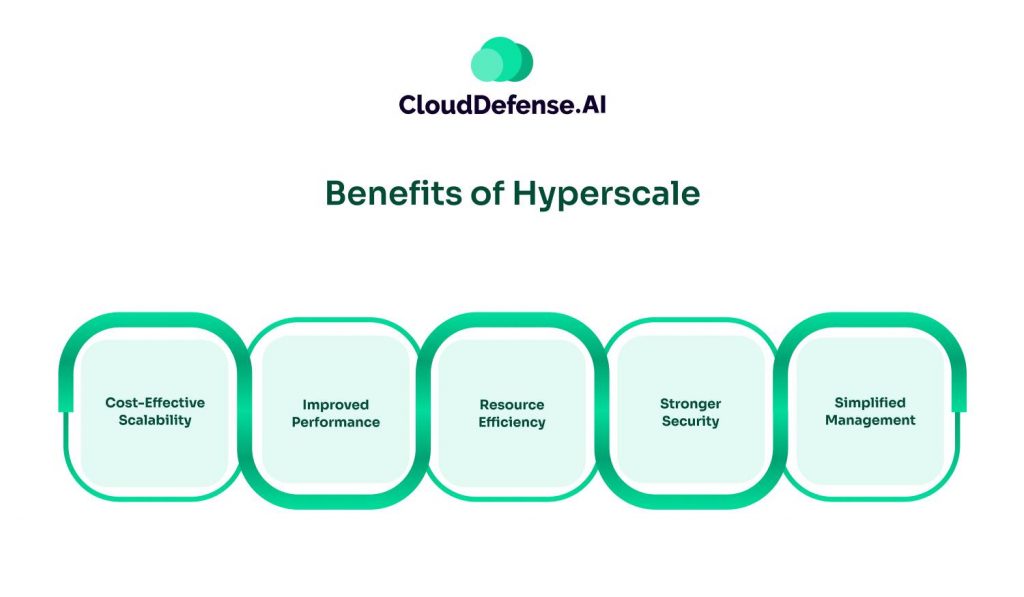What is Hyperscale?
Hyperscale refers to a technology architecture’s capability to seamlessly scale as resource demands increase. This architecture is crucial for meeting the expanding data needs of organizations by adding resources to large, distributed computing networks without needing extra cooling, electrical power, or physical space.
At its core, hyperscale infrastructure comprises scalable cloud computing systems that interconnect vast numbers of servers. These servers can be adjusted—either increased or decreased—based on network requirements and performance demands. This flexibility is essential for constructing strong, scalable distributed infrastructure systems that cater to the big data and cloud computing needs of modern enterprises.
Hyperscale integrates compute, storage, and virtualization layers into a unified architecture, typically associated with major cloud computing and data center providers. This integration ensures that the infrastructure can handle large-scale data processing and storage, making it an indispensable component of contemporary IT environments.
Why Hyperscale?
Hyperscale is essential for businesses to efficiently handle exponential data growth and dynamic workloads. It offers unparalleled scalability, enabling organizations to swiftly adapt to fluctuating demands without major infrastructure changes. Hyperscale solutions provide cost efficiency by optimizing resource use and reducing operational expenses.
Additionally, they enhance performance and reliability through distributed systems, ensuring continuous availability and resilience. As businesses increasingly rely on big data and cloud services, hyperscale infrastructure becomes vital for maintaining competitive advantage, supporting innovation, and driving digital transformation.
How does Hyperscale Work?

Hyperscale computing operates by simplifying traditional computing systems to maximize hardware efficiency and reduce costs, allowing for greater investment in software. It uses horizontal networking of servers, enabling seamless addition or removal of servers based on capacity demands.
The process is managed by a load balancer, which monitors data processing needs, handles requests, and distributes resources accordingly. This load balancer continually assesses server workloads and data volumes, dynamically adding servers as required to meet increasing demand. By doing so, hyperscale ensures optimal performance and scalability, making it ideal for handling large-scale data and computing requirements.
What is a Hyperscale Data Center?
A hyperscale data center is an expansive facility designed to accommodate millions of servers and numerous virtual machines, far surpassing the capacity of traditional data centers. These data centers provide a highly responsive, scalable, and cost-effective infrastructure, crucial for meeting the growing data storage and usage demands of modern organizations.
Hyperscale data centers minimize complexity and enhance business operations by integrating vast computing and networking systems, allowing for seamless scaling and efficient resource utilization. Their ability to support massive data volumes and dynamic workloads makes them essential for enterprises relying on big data analytics, cloud computing, and large-scale IT operations.
What is Hyperscale Automation?
Hyperscale automation refers to the consistent automation capabilities within hyperscale data centers that enable organizations to efficiently manage every aspect of their production environments. This includes handling high-traffic websites and complex, specialized workloads such as cryptography, genome processing, and 3D rendering.
By automating routine tasks and processes, hyperscale automation ensures seamless scalability, optimal resource allocation, and improved operational efficiency. This automation allows businesses to quickly adapt to changing demands, maintain high performance, and reduce manual intervention, ultimately leading to more reliable and cost-effective IT operations.
What is Hyperscale Traffic?
Hyperscale traffic refers to the massive and complex flow of data within hyperscale data centers, which is managed through sophisticated scaling techniques. This traffic involves the reception, processing, and routing of vast amounts of data, often from numerous high-traffic sources like large websites and advanced computing workloads.
Hyperscale data centers utilize horizontal scaling to increase the number of machines handling the data and vertical scaling to enhance the power and capacity of existing machines. This dual approach ensures that the data center can efficiently manage and distribute the heavy and variable traffic loads, maintaining optimal performance and reliability even under significant demand.
Benefits of Hyperscale

Hyperscale offers numerous benefits for organizations looking to optimize their IT infrastructure. It smoothens data management, making it easier to locate information and reducing unnecessary data duplication. This simplification extends to data backups, ensuring they are more efficient and less resource-intensive.
Additionally, hyperscale enhances security by applying comprehensive controls and policies across the network. This results in cost-effective scaling, as organizations can flexibly expand their resources without significant financial burden.
The tightly integrated computing and networking capabilities of hyperscale allow businesses to fully utilize their existing hardware, maximizing resource efficiency. This integration facilitates swift and straightforward execution of big data analytics and cloud computing projects, enabling organizations to use their infrastructure for greater performance and scalability. Overall, hyperscale provides the flexibility, efficiency, and security needed to support modern enterprise demands.
Final Words
In conclusion, hyperscale computing and data centers represent a significant evolution in IT infrastructure, offering unparalleled scalability, efficiency, and cost-effectiveness. By optimizing hardware usage, simplifying data management, and enhancing security, hyperscale solutions enable organizations to meet the demands of modern data-intensive operations.
As businesses continue to rely on big data and cloud services, adopting hyperscale infrastructure becomes essential for maintaining competitive advantage, driving innovation, and ensuring strong and flexible IT environments. Embracing hyperscale technology is not just a strategic choice but a necessity for thriving today.







